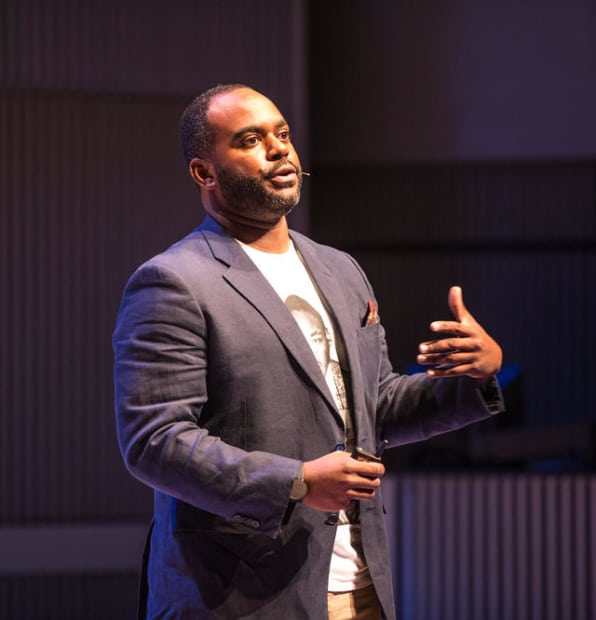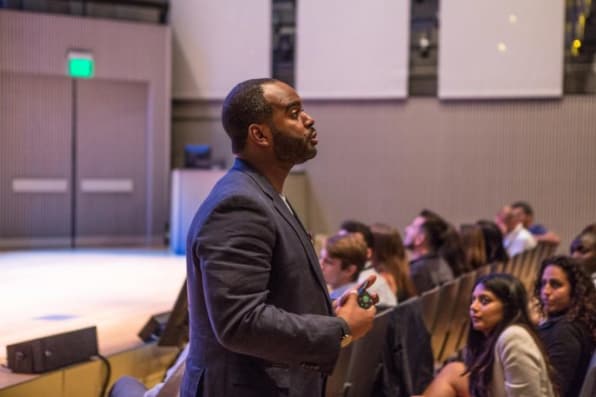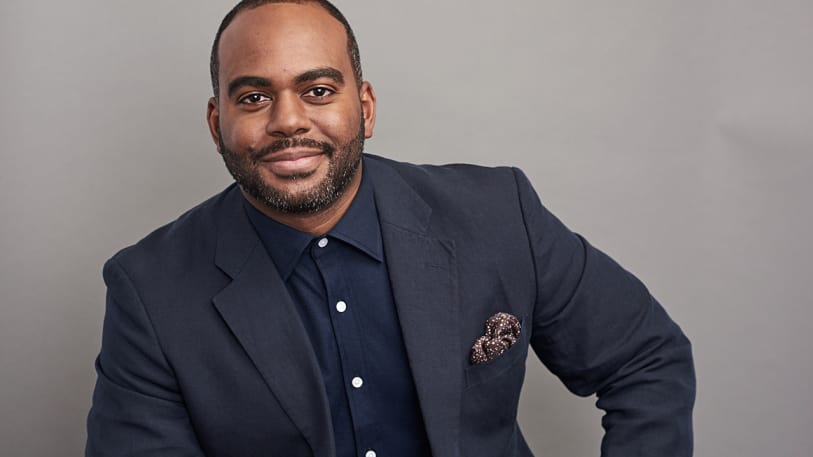EBay’s First Diversity Chief On How To Make Inclusion Matter To Everyone
Who’s Fixing Tech’s Diversity Problems?
Imagine how entangled this issue can be if there’s this level of contradiction and questioning in the headlines. “It took just minutes of searching to come up with these titles and more. What’s happened with this conversation? It’s supposed to be about people and something good. In many ways it’s become a bastardized, sticky conversation to have,” says Damien Hooper-Campbell, eBay’s first chief diversity officer.
“Add in the backdrop of the United States and the racially polarizing acts that we’re seeing happening across all of our cities. Add in the backdrop of what’s happening in the U.K. with Brexit. Add in the backdrop of what’s happening in Germany with refugees. This has not become the most fun discussion to have,” Hooper-Campbell concludes. But, he says, “It’s not for lack of trying to start the conversation.” The conversation just needs to evolve. Here’s his take on how.

Redrawing The Circle Of Trust
The intensity and complexity of the issues involved in conversations around diversity and inclusion has sent the tech sector in a number of different directions in search of meaningful change. Hooper-Campbell has noted some common patterns, from hiring diversity and inclusion leaders like himself to tracking demographic data and rolling out formal training programs. It’s not that Hooper-Campbell believes these investments of money, resources, and time is ineffectual—it’s just usually that they’re often applied in a silo without enough consideration of the human element.
To address that problem, Hooper-Campell brings up the phrase “circle of trust,” first popularized by Robert De Niro’s character in Meet the Parents. As a reminder, De Niro plays the cynical father—and former CIA agent—who believes no one is good enough for his daughter. “The boyfriend, played by Ben Stiller, is desperately trying to make a good impression, but he stumbles all over himself. The most infamous scene is when Robert De Niro corners him and introduces the ‘circle of trust’ concept,” says Hooper-Campbell. “He talks about how his entire family is in it, how he knows Ben Stiller is trying to get in the circle and that he’s watching him.”
“Most of the time, we don’t know each other,” Hooper-Campell explains. “Whether it’s at conference, at a company that skyrockets from 20 to 2,000 people, or on a commuter train, we are often in environments where we see but don’t know each other.”
As he sees it, the goal for companies is to draw wider circles of trust—faster. “The challenge is that even among those we see every day—for hours and hours at a time —we don’t get beyond those surface-level conversations. Even among those we know, we choose not to dive deeper when we’re at work.”
To change that, Hooper-Campbell believes, “We need to do what we very rarely do as human beings when we first meet each other. We need to be okay being politically incorrect for the moment as long as we’ve established an assumption of good intent. That allows us to get our real views out there and gives us permission to call BS when we see it.” Being in the circle of trust is like being in the exit row on a plane. You need verbal confirmation before proceeding.
Define Diversity And Inclusion—But Parse Them First
As Hooper-Campbell sees it, the point of the circle of trust is to quickly create an environment that is conducive and safe for open conversations about diversity and inclusion. And to do that, you first have to define the topic in your own terms: What does diversity actually mean to you?
It doesn’t have to be perfect prose—the process of sharing definitions is what’s powerful. “What I’m not looking for is what it means as defined by the dictionary. Or what it means as defined by what you think people want to hear or what the media says,” says Hooper-Campbell. “What does it actually mean in your world? That’s where I want you want to start.”
In group exercises, Hooper-Campbell suggests asking for volunteers to share their answers to that question. Let there be moments of silence, if they’re needed. As the leader, give your definition, too, but not before a handful of your people do. The answers will vary, but by starting diversity conversations this way, Hooper-Campbell has noticed that, at least conceptually, most us get what diversity means. In reality, “it’s everything,” he says. But often in the workplace, “this conversation narrows to be about only race and gender. While, yes, race and gender are very important aspects, diversity goes well beyond them. It absolutely should include them, but goes even further into hundreds of attributes.”
The next step, he suggests, is to define the other word: inclusion. “What does this word actually mean?” Hooper-Campbell asks his teams. “Again, I don’t want you to do what we typically do, which is just define ‘inclusion.’ Forget Merriam-Webster.” After organizing participants into pairs, he then prompts them to ask each other: “Dial back in your own life to a personal event when you felt excluded—regardless of when or why.”
“Now these conversations don’t have to be about race or gender or age or sexual orientation, but they absolutely can be—no judgment here,” says Hooper-Campbell. “This could be from when you were 4 years old and you didn’t get picked for the kickball team. This could be from earlier today when you realized that people at your company held a meeting and didn’t invite you. It doesn’t matter what it is. I just want you to talk openly and candidly with the person across from you about a time in your life when you felt excluded.” He adds, “Before you finish, come up with a couple of adjectives that describe how you felt at that moment. Go!”
Here’s an example of the types of responses Hooper-Campbell has heard:
I was fat as a kid. The things that I thought were important, like school, weren’t what others thought were important, like sports. The majority didn’t care about what I did. Whatever everyone thought was important was how people judged popularity. That was a multi-decade recurring theme for me. My adjectives are “loser” and “lonely.”

What’s Being Shared, What’s Being Said
The experiences shared through these exercises can bring teams together, says Hooper-Campbell. And in the process, they can make diversity and inclusion feel personal—not like an impersonal corporate initiative. Suddenly the stories that get voiced belong to the people you see often. It’s a step toward truly knowing them—and making them feel welcome.
But Hooper-Campbell also notes that it’s a crucial step toward getting more people involved in the conversation on, and commitment to, diversity and inclusion. While an experience of being overweight may never be the same experience as being excluded because of your skin color or your gender, it should help all of us get a bit closer to making “inclusion” less of a buzzword and more of a human experience.
“The point of this is there are people who are working for you right now, or are trying to work for your company, who feel this way,” says Hooper-Campbell. “If you ask for a show of hands of those who have ever felt excluded, you’ll see many, many more. Nearly every person has felt excluded at least once in their life.”
Then, after this exercise, Hooper-Campbell asks a final question: “How many of you have ever been responsible—intentionally or unintentionally—for excluding someone else? If people are really in the circle of trust, you’ll see just as many hands go up.”
A version of this article originally appeared on First Round Review and is adapted with permission.
(48)














